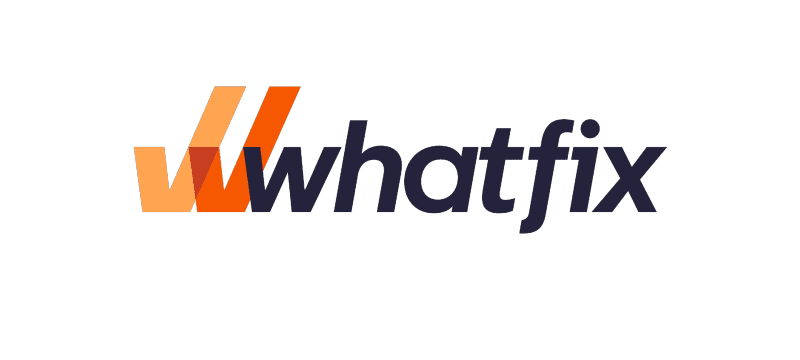Understand why HR technology projects are more than just about technology and their success depends upon multiple human and organizational factors.
Hear what employees really think of their organization’s digital adoption methods.
Get into the details on why digital adoption is one of the most crucial parts of HR technology project success.




The webinar kicked off with a sharing of a quote from Mark Oehlert, Innovation Success Manager at Amazon, on how desperate employees will be to reject workplace technology if it doesn’t work for them – “they will cross a burning hot desert to give it back to you” is the on-record quote – which was the perfect set-up for an UNLEASH led discussion of why digital adoption is so important and why the employee voice is a crucial part of this.
Therefore, in conjunction with Vibhav Agarwal, Director, Product Marketing at Whatfix, Dr. Heba Makram, a transformation advisor, researcher, and future of work expert, and Gregory Pilano Director, Head of Human Resources Technology, Nestlé, Kate Graham, Director of Content Labs & Insight at UNLEASH lead a discussion on how to improve digital adoption rates, why they’re a crucial part of HR technology projects, and how to get towards all-important key HR technology project benefits.
Watch on-demand to:
- See what the key measure of HR project success are, including insight into where cost-adherence, goal-setting, and employee experience play their part.
- Get the topline data headlines, from UNLEASH’s latest research, on success rates, investment in HR technology projects, and digital adoption.
- Hear the latest insight on how to understand digital adoption, what might ‘roadblock’ it, and how to retain as many of its organizational benefits as possible.
We realized digital adoption was important when we started listening to our employees… we also needed to ensure we got a return on investment.
Gergory Pilano, Director, Head of Human Resources Technology, Nestlé
Digital adoption rates could be better
From UNLEASH’s latest research it is clear that HR project success is going in the right direction – it is twice as high as was reported in the original research into this topic two years ago – but it is still quite low. Less than one-third of organizations currently rate their HR projects as highly successful. Worryingly, only 69% are tracking the digital adoption of new HR technology, too. It is clear there is work to be done here, too.
This isn’t through lack of trying, and a variety of methods, though. Respondents to the UNLEASH research said they were rolling out training in a wide range of methods, were using digital adoption platforms, used a wide range of internal communication methods, from C-suite messaging to cross-channel promotion, and also integrated anything new with existing systems. It begs the question: what more can be done?
Understanding the benefits, getting the benefits
To help improve digital adoption rates, discussion in the webinar turned to understanding what the key benefits of HR technology project success were – including improved tech stack compatibility, improved self-service, better functionality, and a shift towards HR becoming a truly strategic function – which, if more within the organization buy into, can help drive better digital adoption rates.
Yet, this will require hard work: HR must improve understanding of how important digital adoption is to get these successful project outcomes. This, according to Dr. Heba Makram, relies on getting a better understanding of what digital adoption is. Rather than just about getting employees to use new digital assets or platforms or systems in a box-ticking manner, it’s about getting them to use them to their fullest extents. Often this isn’t achieved, Makram explained, because HR has doubts about workforce abilities and feels that they might not be able to use these technologies to their greatest potential or it views the full potential of these assets and systems as a luxury. A misstep, she argued.
Yet, as Makram continued, better digital adoption can result in HR knowing its workforce better and giving them the right tools to enable them to better deliver on customer needs. Digital adoption of new technologies will also give employees the skills and tools to be more effective at their jobs which, perhaps obviously, boosts performance, morale, and workflow. It also, as Pilano says, can boost retention and workplace satisfaction. In a talent crisis, not a bad thing at all.
Digital adoption: one pathway to better organizational and HR outcomes?
Since the beginning of the pandemic, HR has been dealing with an increased workload and increased pressure. Therefore, anything that can allow the function to operate more efficiently, or free up time, is going to be a boon. Here, Agarwal said a focus on digital adoption could help. It can empower employees to use systems to do their own administrative tasks rather than relying on people practitioners to get what they need. Ergo: digital adoption becomes a people and organizational efficiency tool. Done well, this type of empowerment should occur in the long-term, too.
However, as Makram described, many businesses aren’t really tracking the success of digital adoption, citing the fact that it’s quite a nebulous and time-consuming facet of organizational life to get a proper metric for. As such, webinar speakers suggested these businesses could be missing out on the benefits. To gain from these potential advantages, Makram intimated that HR leaders need to view digital adoption success, not as an instant yes or no; instead, they need to measure it over the long term. Unfortunately, many organizations simply count digital adoption success as switching over from one system to another. A binary view that Pilano says is wrong.
To get the benefits for both organization and people, Pilano argued that digital projects, to be adopted and embedded properly, need to have continuous communication around them, as well as training and internal advocate support. Employees and HR practitioners alike, Pilano said, also need to be helped to understand the why behind new technology being rolled out. Of course, though the return on investment will be a key driving factor here, it will also be to create organizational and people efficiencies, help them do their jobs, and is also about creating better customer outcomes. Everything that HR should be driven by regardless of the project, product, or evolution anyway.
To download your own copy of Why HR Projects Succeed, with exclusive insights into what you need to make your HR tech projects accelerate, visit our report hub, here.
